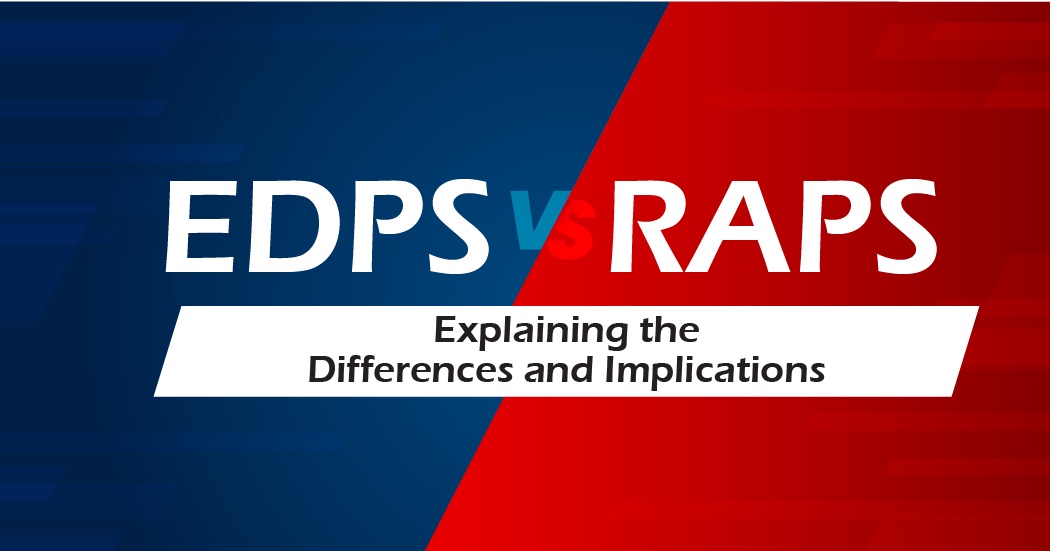Risk adjustment plays a vital role in ensuring accurate and fair reimbursement in healthcare systems. As we move into the digital era, the transition from traditional Risk Adjustment Processing System (RAPS) to Electronic Data Processing System (EDPS) brings forth new opportunities for maximizing risk adjustment effectiveness. In this article, we will explore the benefits of EDPS and discuss strategies to optimize risk adjustment in the digital landscape.
Understanding RAPS and EDPS:
a) RAPS:
The Risk Adjustment Processing System (RAPS) is a retrospective payment model that uses diagnosis data submitted by healthcare providers to calculate risk scores for Medicare Advantage (MA) plans. It primarily relies on encounter data, which are collected during face-to-face visits, to determine the severity of patients' conditions and allocate appropriate reimbursement.
b) EDPS:
The Electronic Data Processing System (EDPS) is a modernized approach to risk adjustment that leverages electronic health record (EHR) data and other digital sources to capture comprehensive patient information. EDPS allows for real-time analysis and risk stratification, enhancing the accuracy and timeliness of risk adjustment processes.
Benefits of EDPS in Risk Adjustment:
a) Enhanced Data Accuracy:
EDPS enables the utilization of electronic health data, which reduces errors associated with manual data entry and paper-based documentation. By directly accessing digital records, EDPS minimizes the risk of incomplete or illegible information, leading to more accurate risk assessment and appropriate reimbursement.
b) Real-time Risk Stratification:
Unlike RAPS, which relies on retrospective data submission, EDPS allows for real-time risk stratification. By analyzing patient data as it becomes available, healthcare organizations can promptly identify high-risk individuals and allocate appropriate resources, leading to improved care management and better patient outcomes.
c) Efficient Documentation and Coding:
EDPS offers built-in documentation and coding assistance tools, which streamline the coding process for healthcare providers. These tools provide coding suggestions based on the patient's clinical information, reducing the burden on providers and minimizing coding errors that could impact risk scores.
d) Expanded Data Sources:
EDPS can integrate data from various digital sources, including EHRs, claims data, pharmacy records, and laboratory results. This comprehensive view of patient information enables a more accurate assessment of patient risk, capturing a wider range of diagnoses and conditions that may impact reimbursement.
Strategies to Optimize Risk Adjustment with EDPS:
a) Robust Data Integration:
To maximize the effectiveness of risk adjustment in the digital era, healthcare organizations should prioritize integrating data from diverse sources, such as EHRs, claims data, and pharmacy records. This comprehensive data integration ensures a holistic view of patient health and facilitates accurate risk assessment.
b) Continuous Data Quality Improvement:
Regular monitoring and auditing of data quality are crucial in an EDPS environment. Healthcare organizations should establish processes to identify and address data inconsistencies, coding errors, and other issues that may impact risk adjustment accuracy. Continuous data quality improvement efforts will help maintain reliable risk scores and reimbursement accuracy.
c) Provider Education and Engagement:
Engaging healthcare providers in risk adjustment initiatives is essential. Educating providers about the importance of accurate documentation and coding, as well as the role of risk adjustment in reimbursement, can improve the quality of data submitted. Collaboration between healthcare organizations and providers ensures a shared understanding of risk adjustment goals and fosters a culture of data accuracy.
d) Data Analytics and Predictive Modeling:
Leveraging advanced data analytics and predictive modeling techniques can further enhance risk adjustment outcomes. By analyzing historical data and identifying patterns, healthcare organizations can proactively identify high-risk patients, intervene early, and allocate appropriate resources to improve outcomes while optimizing reimbursement.
The transition from RAPS to EDPS presents an opportunity to improve risk adjustment effectiveness in the digital era. By leveraging the benefits of EDPS, healthcare organizations can enhance data accuracy, enable real-time risk stratification, streamline documentation and coding processes, and integrate diverse data sources. Implementing strategies such as robust data integration, continuous data quality improvement, provider education and engagement, and data analytics will further optimize risk adjustment outcomes. Embracing the digital transformation in risk adjustment is key to ensuring fair and accurate reimbursement while providing high-quality care to patients.


No comments yet